Some risks are easy to remove whereas others might be less so. In this section, we provide practical information on how to potentially reduce risks from epilepsy in your day to day life. Remember, the more you know about your own epilepsy the more you can make better and safer choices - some of the information below can help you learn more about your epilepsy and potentially lead to more targeted treatments, which therefore reduces your the risk of associated injuries from seizures, prolonged seizures and the risk of Sudden Unexpected Death in Epilepsy(SUDEP). You can learn more about SUDEP by visiting the 'SUDEP' section of our website.
Identification
Carrying identification to let someone know you have epilepsy is important. It can give information about what someone needs to do if you have a seizure. People with epilepsy sometimes have a card in their wallets/purse saying that they have epilepsy which contains key information about their epilepsy for a first responder, while others wear bracelets or bands that can display to a first responder that they have epilepsy. We have a version of these bands available in our shop. Visit the Shop section of our website to buy yours.
Seizure Diaries
A seizure diary is a written or electronic record of your seizures. Tracking when you have seizures and any information around when and possibly why you had a seizure can be very important information to provide to their medical team. This is because potential patterns on your seizures and possible triggers could be identified if all information is recorded and presented to your medical team. It can also help your medical team track any changes in your seizures over time. We have seizure diary templates which are available to download from our website:
- Download our weekly seizure diary template from our website
- Download our monthly seizure diary template from our website
Our Epilepsy Ireland Seizure management app can also help you track vital information on how your seizures are presenting and record information. You can find further information on the app by visiting the 'Our Services' section of our website.
Talk About It
While it may appear simple, simply letting others know that you have epilepsy, how your seizures present and how they can help should you have a seizure can be very important factor in reducing risks. Generally, people will want to help in the event of a person having a seizure - but its important that they know how to do so correctly as there are still many myths associated with seizure first aid. Share our resources with friends, family, classmates, colleagues, teammates etc and let them know how they can respond correctly. However, we recognise that it can be a process in becoming comfortable in telling others about your epilepsy. If you need help around this, visit the 'How2Tell' section of our website for direct information on telling others about your epilepsy.
Alarms and Seizure Supports
There are numerous models of seizure alarms available and these can help give peace of mind to many as they can alert a caregiver that a person is having a seizure so they can respond. However, alarms can be costly so it is best to look at the range of products available to find what suits your needs and budget best. To decide on the best device for you , we recommend that you think about:
- Your seizure type - what type of seizures do you have and is there movement involved? Do you get warnings that you're about to have a seizure and what are the features of your seizures?
- How will you benefit? - what benefit do you foresee for you/the person you care for by purchasing the alarm? Do you live alone or do you wish to live independently? Think about how an alarm might benefit you by asking these questions and more.
- Which alarm is best suited? - Some alarms are specifically designed to detect certain seizures. For example, a bed alarm will detect nocturnal seizures but will not detect daytime seizures. Look at all available devices and make your decision based on which alarm is best suited to you.
- What kind of support will you need from an alarm? The way alarms alert vary. For example, if you live alone, you might want to consider an alarm which contacts a monitoring centre or nearby trusted key-holder. Who the alarm alerts is also an important factor.
Our team regularly provides information to people with epilepsy and their families on the type of alarms that are available, but note that due to the individual nature of epilepsy, we cannot provide recommendations on which alarms will suit you best. If you need further information on alarms, do not hesitate to contact your local Community Resource Officer. You can find their details by visiting the 'Our Local Service' section of our website.
Sleep seizures
A person who experiences sleep seizures should consider the following safety precautions regarding beds and pillows:
- Use low good-sized beds with padded headboards.
- Avoid soft pillows, which can be dangerous due to the risk of breathing obstruction. Ventilated safety pillows are available or some prople might use no pillow at all. You can buy ventilated pillows by visiting the 'Shop' section of our website.
- Smoking in bed is unwise for everyone and particularly so for a person with sleep seizures. Consider using non-flammable bedding and a smoke alarm.
- Keep heavy furniture, lockers etc. away from bedside to prevent injury during a fall.
- Consider using a safety mat/rug on the floor next to the bed if the person tends to fall out of bed during seizures. .
- Avoid the use of the top bunk for persons with sleep seizures.
- Wall mounted lamps may be considered as they pose less safety risks than ordinary table lamps or study lamps which are easily knocked over.
- Avoid coarse carpets, which can lead to friction burns for those who may fall out of bed. If it's not possible to replace carpets, a protective mat can be used.
We're here to help
Be it general discussions around potential risks and how to reduce them, information on the importance of recording seizures any why, or providing overall support on your day to day journey with epilepsy be it through a lived experience or via supporting a loved one, arranging epilepsy awareness talks in your school or workplace, our team are here to help you. Please do not hesitate to get in contact with your local Community Resource Officer. You can find their details by visiting the 'Our Local Service' section of our website.
